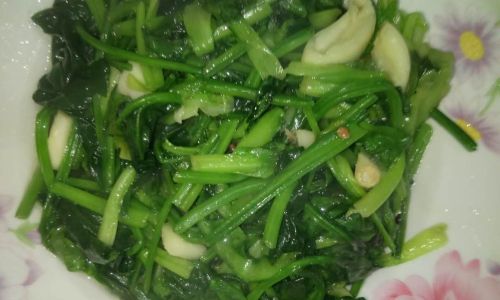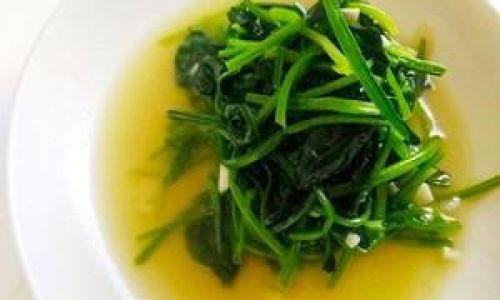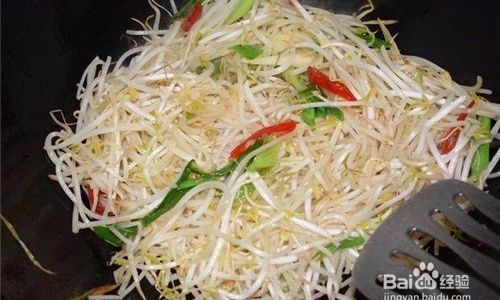Stir-fried spinach is a dish that transcends cultural boundaries, beloved for its vibrant color, earthy flavor, and remarkable versatility. Whether served as a side dish, a main course, or incorporated into soups, dumplings, or wraps, this leafy green vegetable offers endless possibilities for culinary creativity. Yet, achieving the perfect balance of tenderness, crispness, and depth of flavor requires more than just tossing spinach into a hot pan. This article delves into the nuances of selecting, preparing, and cooking spinach to elevate this humble ingredient into a restaurant-worthy dish. From mastering heat control to understanding the role of aromatics and seasonings, we’ll explore the techniques that separate a mundane stir-fry from a memorable meal.
The Foundation: Choosing the Right Spinach
Not all spinach is created equal. The variety you choose will significantly impact the texture and taste of your final dish. Baby spinach, with its delicate leaves and mild flavor, is ideal for quick sautés where minimal cooking is required. Its tender nature makes it perfect for dishes where a slight crunch is desired. On the other hand, mature spinach, with its thicker leaves and sturdier stems, benefits from longer cooking times to mellow its slightly bitter edge. When shopping, look for crisp, deep green leaves free from wilting or yellow spots. Organic spinach may have a more pronounced earthy taste, while conventionally grown varieties might require thorough washing to remove residual pesticides.
Preparation: Cleaning and Trimming
Spinach is notorious for trapping dirt and grit, making thorough cleaning essential. Fill a large basin with cold water, submerge the leaves, and swirl gently to dislodge debris. Repeat this process until the water remains clear. Avoid soaking the leaves for too long, as this can leach nutrients and waterlog the greens. After patting dry with a salad spinner or clean kitchen towel, trim the stems. While some recipes discard stems entirely, they can add a pleasant crunch if thinly sliced or sautéed separately. For mature spinach, consider separating the stems from the leaves and cooking them first, as they require slightly longer to soften.

The Importance of Heat and Timing
Stir-frying is a high-heat, fast-cooking method that preserves the spinach’s vibrant color and nutrients while developing complex flavors through caramelization. A carbon-steel wok or a large cast-iron skillet is ideal, as it retains heat efficiently and distributes it evenly. Preheat the pan over medium-high to high heat until a drop of water sizzles and evaporates instantly. Add a neutral oil with a high smoke point, such as grapeseed or peanut oil, and swirl to coat the surface.
Timing is critical. Overcooked spinach becomes mushy and releases excess moisture, diluting flavors. Undercooked leaves retain a raw, astringent taste. Aim for a cooking time of 2–3 minutes, tossing constantly to ensure even wilting. For a hybrid texture, add the stems first, cook for 30 seconds, then toss in the leaves.
Aromatics: The Flavor Boosters
Aromatics form the backbone of any stir-fry, elevating the dish from mundane to magnificent. Garlic is a classic pairing with spinach, offering a pungent, savory note. Slice it thinly or mince it finely, depending on your preference. Ginger adds a warm, peppery kick, while dried chili flakes or fresh birds-eye chilies introduce a subtle heat. For a touch of smokiness, consider adding a pinch of smoked paprika or a drizzle of sesame oil just before serving.
Sauté aromatics first in the hot oil to release their essential oils, but avoid burning them—bitter, acrid flavors will ruin the dish. If using garlic, add it toward the end of sautéing other aromatics to prevent scorching.
Seasonings: Balancing Act
Spinach’s natural bitterness benefits from a careful balance of salt, acid, and umami. Soy sauce or tamari provides saltiness and depth, while a splash of rice vinegar or lime juice brightens the dish. For a richer profile, incorporate a teaspoon of oyster sauce or hoisin sauce. Fish sauce is another option, though its pungency may overpower delicate preparations.
Sugar or a pinch of honey can temper bitterness, but use sparingly to avoid cloying sweetness. In vegan variations, substitute with a drizzle of maple syrup or a sprinkle of coconut sugar.
Advanced Techniques: Deglazing and Emulsifying
For a restaurant-quality finish, consider deglazing the pan after cooking the spinach. Remove the greens, then add a splash of stock, wine, or sherry to the hot pan. Scrape up any caramelized bits (called fond) and reduce the liquid by half. Return the spinach to the pan and toss to coat, allowing the liquid to cling to the leaves. This technique adds layers of flavor and glossiness.

Alternatively, emulsify the dish by whisking a small amount of cornstarch or arrowroot powder into cold water, then stirring it into the pan during the final moments of cooking. This creates a silky sauce that coats the spinach without weighing it down.
Common Pitfalls and How to Avoid Them
- Soggy Spinach: Overcrowding the pan traps steam, leading to mushiness. Cook in batches if necessary.
- Uneven Cooking: Larger leaves take longer to wilt. Tear or chop spinach into uniform pieces.
- Bland Flavor: Relying solely on salt undermines complexity. Layer flavors with aromatics, acids, and umami-rich ingredients.
- Burnt Aromatics: High heat is essential, but garlic and ginger can burn quickly. Lower the heat if needed or add a splash of oil to cool the pan.
Creative Variations
Stir-fried spinach need not be a one-note dish. Experiment with global flavors:
- Italian-Inspired: Toss with toasted pine nuts, raisins, and a sprinkle of Parmesan.
- Thai Twist: Add coconut milk, lemongrass, and lime zest for a creamy curry-inspired side.
- Mediterranean Flair: Mix in sautéed cherry tomatoes, olives, and crumbled feta.
- Korean-Style: Finish with gochujang (Korean chili paste) and a fried egg for a hearty breakfast bowl.
Pairing Suggestions
Stir-fried spinach pairs beautifully with:
- Grilled proteins: Chicken, steak, or tofu.
- Rice dishes: Fried rice, jasmine rice, or coconut rice.
- Noodles: Udon, soba, or zucchini noodles for a low-carb option.
- Breads: Naan, pita, or crusty sourdough for mopping up sauces.
Health Benefits: More Than Just a Side Dish
Spinach is a nutritional powerhouse, packed with vitamins A, C, and K, iron, folate, and antioxidants. Its high fiber content aids digestion, while its low calorie count makes it ideal for weight management. Regular consumption has been linked to improved bone health, blood sugar regulation, and reduced inflammation. By stir-frying instead of boiling, you retain more nutrients that would otherwise leach into cooking water.
Conclusion: The Joy of Simplicity
Stir-fried spinach is a testament to the beauty of minimalist cooking. With a handful of fresh ingredients, a hot pan, and a willingness to experiment, you can transform this leafy green into a dish that delights the senses and nourishes the body. Whether you prefer it bold and spicy or delicate and aromatic, mastering the art of stir-frying spinach opens doors to a world of culinary possibilities. So next time you’re faced with a bunch of spinach, remember: the key to greatness lies not in complexity, but in the harmony of heat, seasoning, and technique.
Final Tip: For a striking presentation, garnish with toasted sesame seeds, red pepper flakes, or a drizzle of chili oil. Serve immediately to preserve its vibrant color and texture. Bon appétit!






0 comments